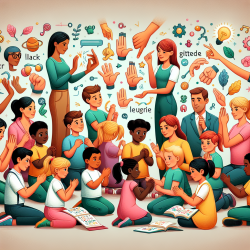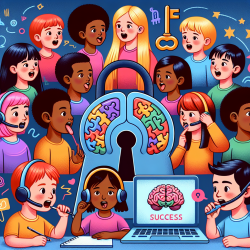As a practitioner dedicated to improving language outcomes for children, you may find the recent study titled "Using Gestures to Help Children With Developmental Language Disorder in Word Learning" particularly enlightening. This research provides empirical evidence on the role of gestures in supporting word learning among children with Developmental Language Disorder (DLD). Here, we break down the key findings and discuss how you can apply these insights in your practice.
The Research at a Glance
The study, published in the Canadian Journal of Speech-Language Pathology and Audiology, compared the effectiveness of iconic gestures, arbitrary gestures, and no gestures in helping children with DLD and typically developing (TD) children learn new words. The research involved 30 children divided into three groups: 10 children with DLD, 10 age-matched TD children, and 10 language-matched TD children. Each group was exposed to new phonological labels for familiar concepts under the three different conditions.
Key Findings
- Scaffolding Effect: Both iconic and arbitrary gestures significantly improved word retrieval compared to no gestures. This was true for both children with DLD and TD children.
- No Group Differences: The benefits of gestures were consistent across all groups, suggesting that gestures are universally helpful in word learning.
- Iconic vs. Arbitrary Gestures: No significant difference was found between the effectiveness of iconic and arbitrary gestures, indicating that any form of gesture can be beneficial.
Applying These Insights
Incorporating gestures into your therapeutic practices can offer a multimodal approach to language learning, which is particularly beneficial for children with DLD. Here are some actionable steps you can take:
- Use Iconic Gestures: These are gestures that visually represent the word's meaning. For example, mimicking rabbit ears when teaching the word "rabbit."
- Incorporate Arbitrary Gestures: Even gestures that don't have a direct visual link to the word can aid in memory and retrieval. For example, making two circles with the index finger to represent a pen.
- Encourage Gesture Imitation: Although the study did not involve children imitating gestures, other research suggests that active participation can further enhance learning.
Encouraging Further Research
While the study provides valuable insights, it also highlights the need for further research to understand the nuances of gesture use in language learning. Variables such as age, severity of language impairment, and the type of words being learned can all influence the effectiveness of gestures.
By integrating these evidence-based practices into your sessions, you can create a more engaging and effective learning environment for children with DLD. For a deeper dive into the research, I encourage you to read the original study.
Using Gestures to Help Children With Developmental Language Disorder in Word Learning










